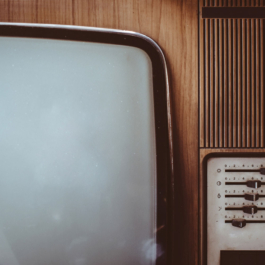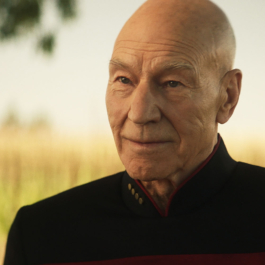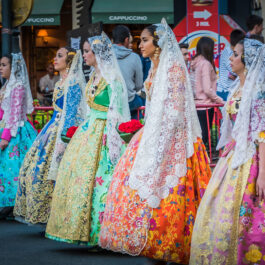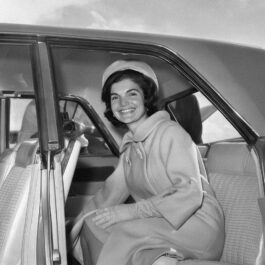Culture
The Most Expensive TV Hits (And Misses)
Slide Nr 1It’s clear that the television landscape is changing, as traditional methods of delivering content give way to streaming services, but the title of King of the Streamers is up for grabs, with studios scrambling to snatch up a piece of this new revolution. And now more than ever, TV productions are swinging for the fences with budgets that would make a movie studio blush. Amazon is pouring a reported $1 billion into its Lord of the Rings TV show, while Disney pumped $100 million into their Star Wars spin-off The Mandalorian. Netflix and HBO, for their part, continue to spend big to draw subscribers. While the format may be new, companies have always had to splash the cash in order to create hits. But what are the prizes for spending wisely, and what are the pitfalls of backing a dud? Here we look at some of the most expensive hits and misses in TV history, what they cost, and whether they were worth it…
0/11
Culture
The Most Expensive TV Hits (And Misses).
Slide Nr 2Game Of Thrones (2011-2019) – Regardless of your opinion on the final season, Game of Thrones redefined television in the 2010s, spearheading a revolution in ambitious, adult-oriented storytelling on a small screen that had been dominated by reality shows and police procedurals in the previous decade. Creating an entire fantasy world filled with ornate costumes and dazzling effects was, as you can imagine, not cheap: early seasons averaged $6 million per episode, which rose to $8 million as the series progressed. Season 8’s budget was reportedly $90 million (about $15 million for each of the six episodes). Was it worth it? Well, despite declining reviews, viewer numbers just kept climbing. The final episode was watched by over 13 million people live in the US (19 million when accounting for catch-up services), becoming the most-watched HBO episode of all time. Making history is expensive!
1/11
Culture
The Most Expensive TV Hits (And Misses).
Slide Nr 3Vinyl (2016) – It must have seemed like a no-brainer in the pitch meeting: a drama set in the raucous 1970s music scene, co-created by Martin Scorsese and Mick Jagger, and starring top names like Bobby Cannavale (The Irishman) and Olivia Wilde (Booksmart). HBO certainly thought so, granting Vinyl $100 million for its first season (around $10 million an episode). Sadly, the story of a record executive trying to negotiate a changing industry was met with silence. Less than 800,000 people watched the premiere episode, a number that declined with each week before the show was cancelled. Middling reviews pointed to a series that was too focused on the salacious side of the music world, but Scorsese later revealed that he regretted not taking more of a creative role, having only directed the opening episode.
2/11
Culture
The Most Expensive TV Hits (And Misses).
Slide Nr 4ER (1994-2008) – For 14 years, the trials and tribulations of a Chicago emergency room captivated viewers in North America. While the series existed at a time before our multiple-screen culture, ER reached a staggering 30 million viewers at its peak in the ‘90s, making stars of the likes of George Clooney and Alex Kingston. That surge in interest meant the original cast’s salaries had to rise, as did production costs – at its peak popularity point, the show cost around $13 million an episode. Again, however, the outlay was justified: the phenomenon that was ER reinvented the medical drama, and was still watched by 10 million people when it took its final bow in season 15, after 331 episodes.
3/11
Culture
The Most Expensive TV Hits (And Misses).
Slide Nr 5The Get Down (2016) – Vinyl was not the only ‘70s musical drama to crash and burn in 2016. Released in two parts, The Get Down viewed the rise of disco and hip-hop through the eyes of young dancers, and featured a promising young cast including Shameik Moore (Spider-Man: Into the Spider-Verse) and Justice Smith (Detective Pikachu). Despite good reviews, and being developed by visual maestro Baz Luhrmann, the show was cancelled (or “concluded”, according to an official statement) after one season. Netflix doesn’t release viewing figures, but many point to the show’s enormous $120 million budget (over $10 million per episode) and lack of buzz as the reasons behind its short life span.
4/11
Culture
The Most Expensive TV Hits (And Misses).
Slide Nr 6The Crown (2016-now) – One figure Netflix was keen to share, however, was the viewing figures for the most recent season of The Crown, their decade-by-decade dramatisation of the life of Queen Elizabeth II. The streaming giant revealed that 73 million households – almost half the service’s 153 million subscribers – watch the show. It would seem that the production’s budget, an estimated $130 million for the first season, has gone on to build one of the company’s biggest successes. It did, however, lead one news report to question whether this fictional monarch cost more than the Queen herself!
5/11
Culture
The Most Expensive TV Hits (And Misses).
Slide Nr 7Band of Brothers (2001) – Steven Spielberg and Tom Hanks united to create and produce this World War 2 miniseries, a dramatisation of the experiences of Easy Company, 2nd Battalion of the US Army. Starring Damien Lewis and David Schwimmer, and featuring early appearances from up-and-comers like Tom Hardy and James McAvoy, it was a beautifully crafted tribute to heroism, establishing HBO as the home of intelligent, long-format storytelling. It was, in essence, a 10-hour movie, and came with a movie-sized budget: $120 million for the series, or around $12.5 million per episode. Six Emmys and a Golden Globe, as well as millions in viewer numbers and box set sales, suggest it was worth the risk.
6/11
Culture
The Most Expensive TV Hits (And Misses).
Slide Nr 8Terra Nova (2011) – While it doesn’t compare with his big-screen exploits, Steven Spielberg has enjoyed a lot of success creating TV shows like Amazing Stories and Band of Brothers. One lowlight, however, was Terra Nova, the hugely ambitious sci-fi show that imagined humans of the future travelling through a temporal rift to create a colony in Earth’s Cretaceous Period. Dinosaurs, exotic locales and high-tempo action came with a price tag that ballooned due to delays and reshoots, resulting in a $70 million price tag for the first season. It’s not as big as some shows on this list, but with wavering interest among viewers and indifferent reviews, it was considered too big a risk for a second season.
7/11
Culture
The Most Expensive TV Hits (And Misses).
Slide Nr 9Friends (1994-2004) – Like ER, Friends broke records during the 1990s, as everyone fell in love with a group of six Manhattan buddies. People everywhere were asking whether Ross and Rachel would end up together, what exactly did Chandler do for a living, and how could a group of twenty-somethings afford such massive apartments in the middle of New York?!? The studio-based sitcom didn’t exactly escalate in terms of production costs, but as the popularity of the show increased, so did the stars’ salary demands. This was a big contributor to the costs of later seasons: a reported $7 million per episode for Season 9, and $10 million per episode for Season 10. The finale was watched by over 50 million people, and the show’s enduring popularity led to the recently announced reunion special on HBO’s streaming platform.
8/11
Culture
The Most Expensive TV Hits (And Misses).
Slide Nr 10Camelot (2011) – In an alternate universe where Game of Thrones never got off the ground, this swords and castles epic would have dominated television. US Network Showtime poured around $7 million per episode into a gritty retelling of King Arthur (Jamie Campbell Bower), Merlin (Joseph Fiennes) and Morgan Pendragon (Eva Green), as the three schemed against each other to gain power in Camelot. The first season debuted around the same time as HBO’s Game of Thrones, and simply didn’t match up to the similarly themed show’s mix of scandal and spectacle. The expensive period drama was cancelled after the first season, with the official reason cited as scheduling conflicts with the cast. Perhaps if Arthurian legends included dragons, it might have been a different story!
9/11
Culture
The Most Expensive TV Hits (And Misses).
Slide Nr 11Marco Polo (2016) – Proof that even streaming giants are not immortal! While successes like House of Cards, Stranger Things and Orange Is the New Black built the platform, Netflix took a big hit with this period drama set around the early years of the Italian explorer Marco Polo (played by Italian actor Lorenzo Richelmy) as he enters the court of Kublai Khan (Doctor Strange actor Benedict Wong). Big sets and a lot of promotion bloated the budget, as the makers attempted to create a buzz-worthy drama capable of matching the big hitters like Game of Thrones and Westworld. The show didn’t really pierce the zeitgeist, and two seasons proved an expensive outlay for the company, who co-produced with the Weinstein Company. By the time the show was cancelled, reports estimated a $200 million loss for the company – about the average cost of a summer movie blockbuster.
10/11
Culture
The Most Expensive TV Hits (And Misses).
Slide Nr 12The Mandalorian (2019) – We end with one of the series that will take TV into the future, Disney+ flagship show The Mandalorian. Set in the aftermath of the events of Star Wars: Episode VI – Return of the Jedi, this spin-off follows the titular bounty hunter (Pedro Pascal) as he breaks his own code to protect the life of The Child, called Baby Yoda by fans. The series cost a reported $15 million per episode, which creator Jon Favreau used to recreate sets from the original trilogy and hire big names such as Werner Herzog and Carl Weathers to populate the cast. As with Netflix productions, audience figures were not available for the show, but worldwide demand for Baby Yoda merchandise – as well as social media analytics – place the show as one of the most popular in the world, ahead of Netflix staples like Stranger Things. Will the second season continue to be worth the expense? We’ll find out in October!
#staysafe #stayathome #selfisolation #selfisolationactivities
11/11
















Sorry, the comment form is closed at this time.